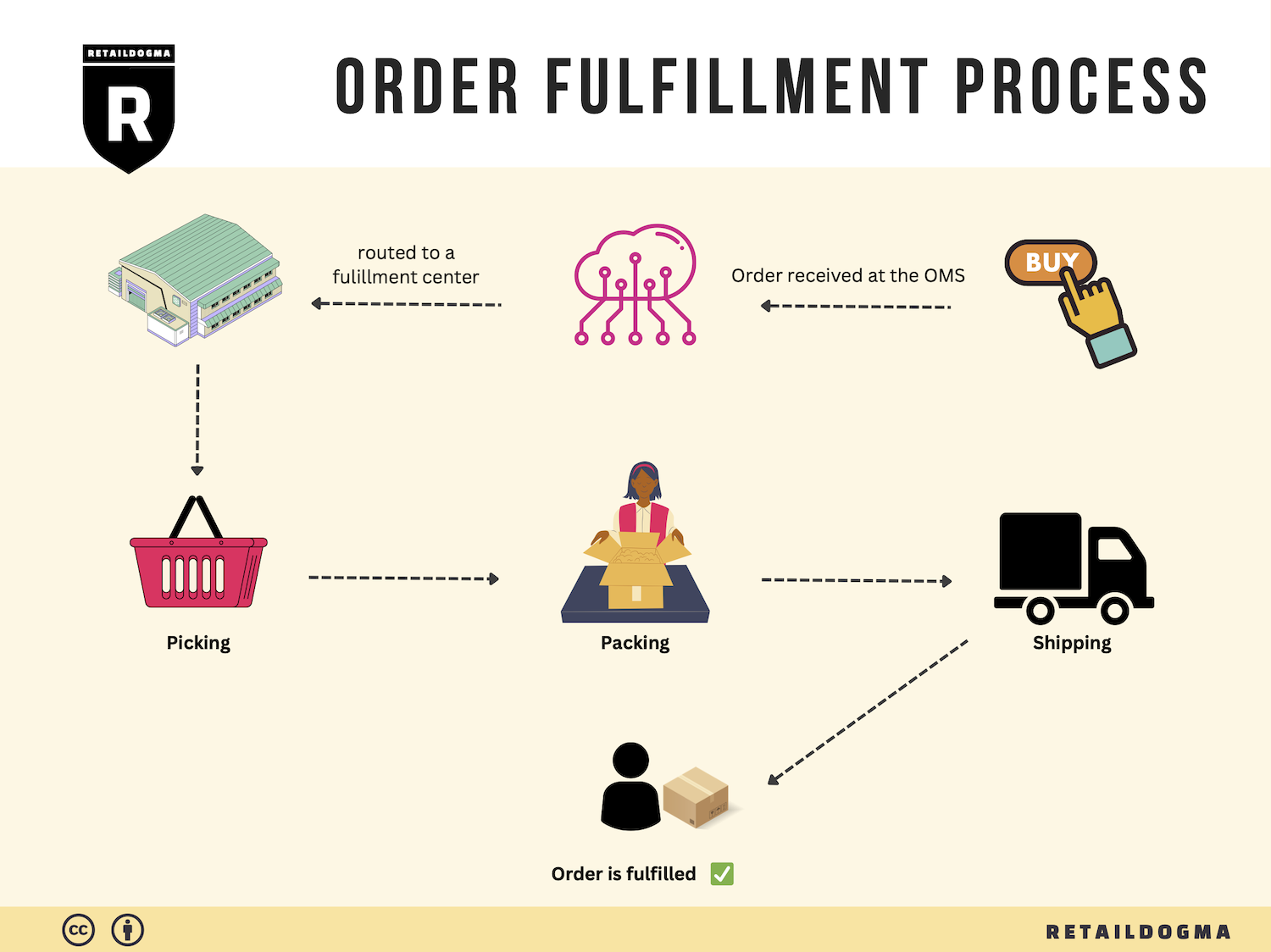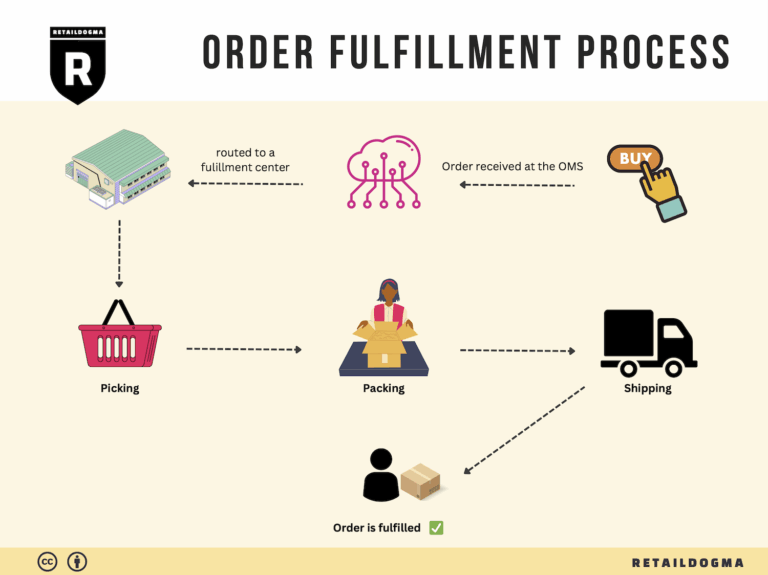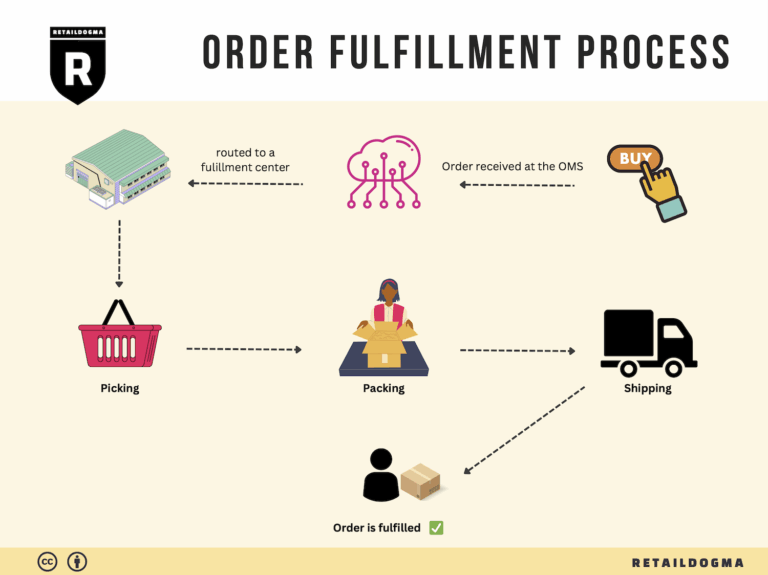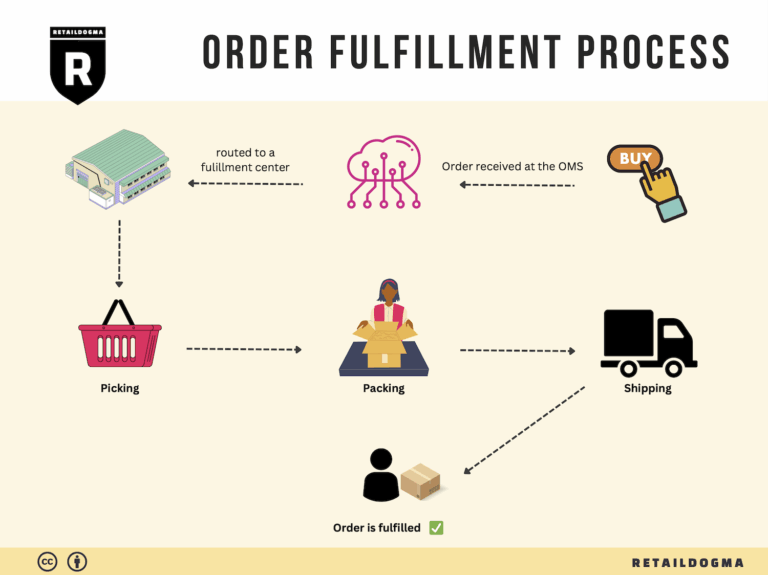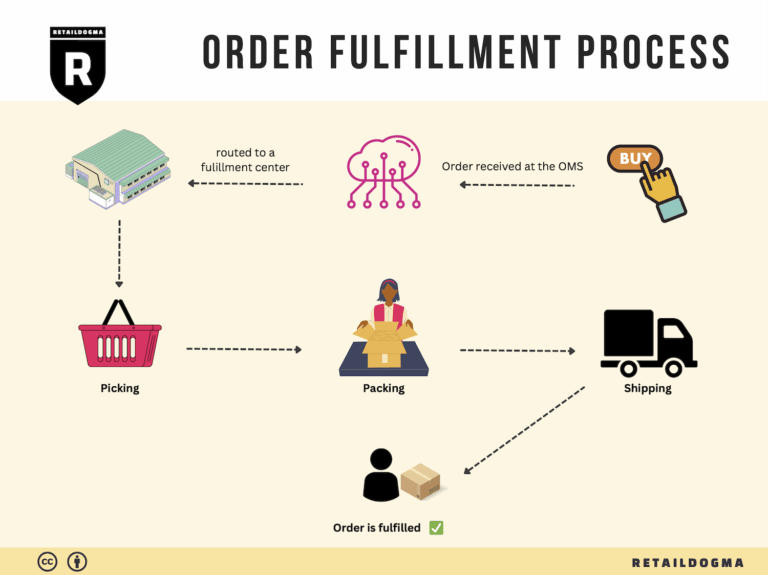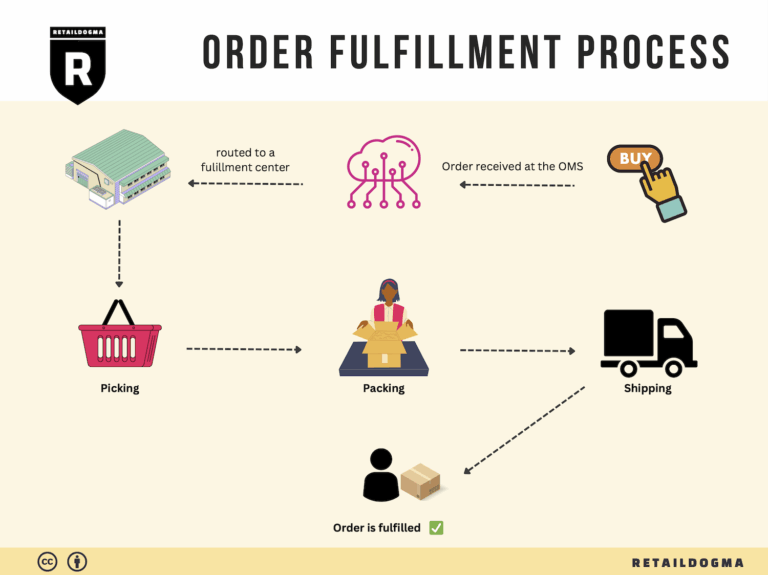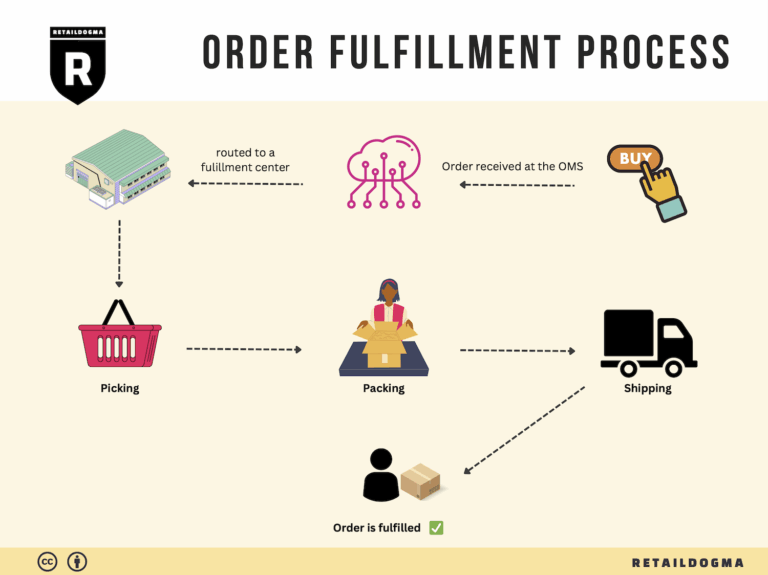Ecommerce Fulfillment Services: The Ultimate Guide (2025)
What is E-commerce Fulfillment? An Introduction for Growing Businesses
Understanding E-commerce Fulfillment: A Pathway to Seamless Operations
As a growing online business owner, you may find yourself overwhelmed with the logistics of packing and shipping orders. The excitement of increasing sales can quickly turn into stress when you face the realities of fulfilling those orders efficiently and accurately. E-commerce fulfillment is the backbone of your operations; it encompasses the entire process of getting a product from your inventory to your customer’s doorstep.
In essence, fulfillment is about ensuring that your customers receive their orders promptly and in good condition. It involves various stages, including inventory management, order processing, packing, shipping, and even handling returns. As customer expectations rise—prompt delivery, accurate orders, and affordable shipping—streamlining your fulfillment process becomes not just a necessity but a strategic advantage.
This guide aims to demystify the world of e-commerce fulfillment for businesses looking to scale. We will delve into different fulfillment models, such as third-party logistics (3PL) and Fulfillment by Amazon (FBA), discussing the pros and cons of each to help you determine which is best suited for your business needs. You’ll learn about the core services involved in fulfillment, including warehousing, inventory management, and returns handling, and how they contribute to a seamless customer experience.
Choosing the right fulfillment partner is crucial for your growth. We will provide practical tips on what to look for in a fulfillment provider, including technology capabilities, service offerings, and customer support. Additionally, we will discuss pricing structures so you can make informed decisions that align with your budget and operational goals.
Ultimately, this guide is designed to empower you to make smart logistics decisions that enhance your business’s efficiency and customer satisfaction. By understanding the ins and outs of e-commerce fulfillment, you can focus on what you do best—growing your brand and delighting your customers. Let’s embark on this journey to streamline your fulfillment process and set your business up for success.
What You’ll Learn In This Guide
- What is E-commerce Fulfillment? An Introduction for Growing Businesses
- The Order Fulfillment Process: From ‘Buy’ Button to Customer’s Door
- Comparing Fulfillment Models: In-House vs. 3PL vs. Dropshipping
- A Deep Dive into Amazon FBA: Pros, Cons, and Who It’s For
- Core Services Offered by Fulfillment Centers
- How to Choose a Fulfillment Partner: A 6-Point Checklist
- Understanding Fulfillment Pricing: A Breakdown of Common Fees
- Frequently Asked Questions (FAQs) about Fulfillment
- Conclusion: Is Outsourcing Fulfillment the Right Move for Your Business?
- Important Disclaimer
The Order Fulfillment Process: From ‘Buy’ Button to Customer’s Door
1. Receiving Inventory
The order fulfillment process begins with receiving inventory, which involves accepting products from suppliers or manufacturers into your warehouse or fulfillment center. During this stage, each item is checked for accuracy against purchase orders to ensure that the correct quantities and types of products have been delivered.
Why It’s Important: Proper inventory receiving is crucial for maintaining accurate stock levels and preventing discrepancies that could lead to stockouts or overstock situations. Efficient receiving processes also set the foundation for effective inventory management and order fulfillment, directly influencing customer satisfaction.
Key Term: SKU (Stock Keeping Unit) – A unique identifier for each product that allows for streamlined tracking and management within the inventory system. Accurate recording of SKUs during receiving ensures that inventory is properly categorized and easily accessible for future steps in the fulfillment process.
2. Warehouse Storage
Once inventory is received, the next step is warehouse storage. This involves organizing and storing products in designated areas of the warehouse or fulfillment center. Effective warehousing utilizes space efficiently and ensures that items can be located quickly when orders are processed.
Why It’s Important: Proper storage reduces the time spent searching for items during order picking and helps maintain an organized inventory system. A well-structured warehouse can significantly enhance operational efficiency, minimize errors, and facilitate faster order fulfillment.
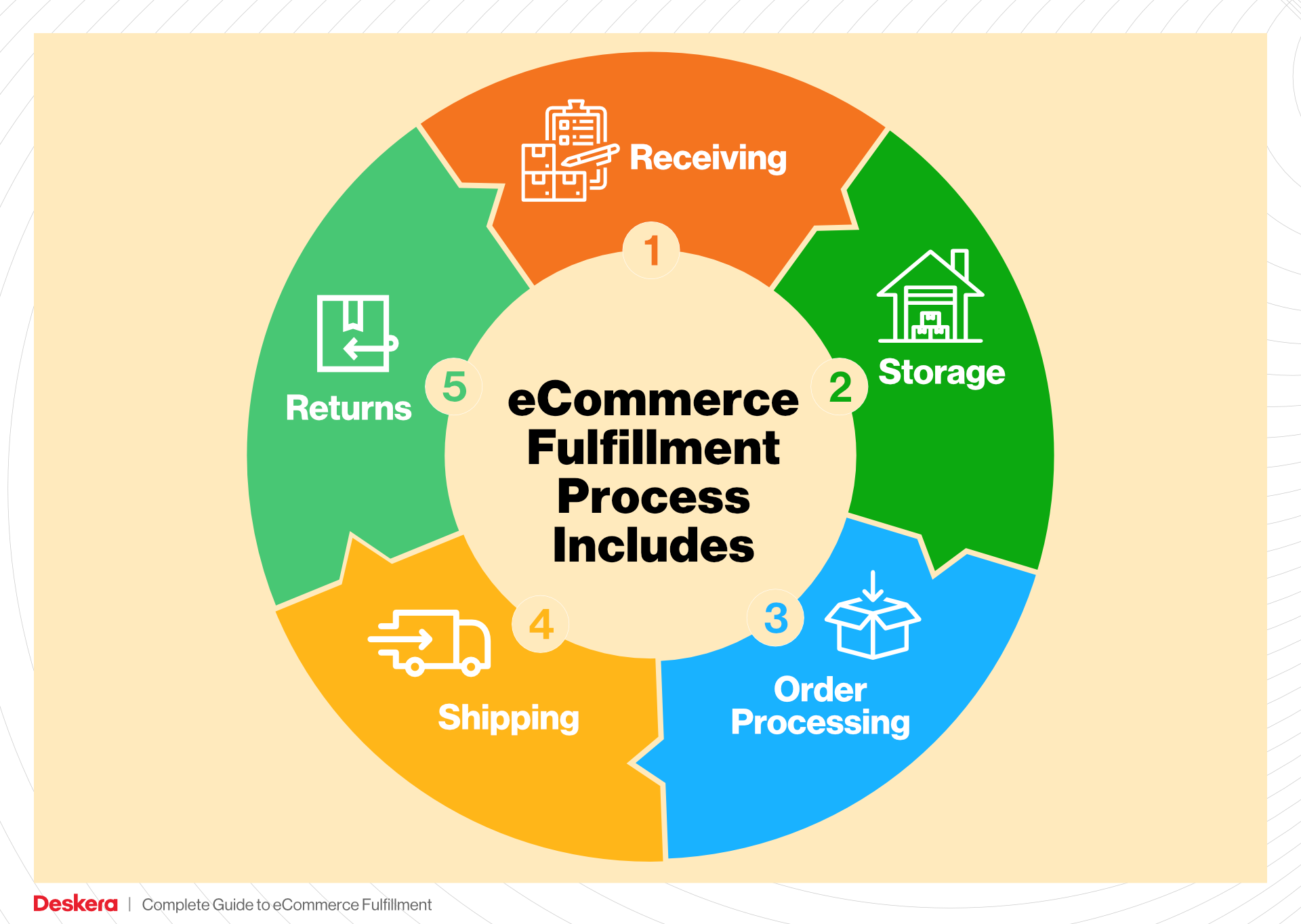
Key Term: WMS (Warehouse Management System) – A software solution that helps manage inventory levels, track product locations, and streamline warehouse operations. Implementing a robust WMS allows businesses to optimize storage space and improve order accuracy by enabling real-time visibility into inventory.
3. Order Picking
Order picking is the process of selecting items from the warehouse to fulfill a customer’s order. This can involve using various methods, such as single order picking, batch picking, or wave picking, depending on the volume of orders and the layout of the warehouse.
Why It’s Important: Efficient picking processes are critical to fulfilling orders quickly and accurately. Delays or errors in picking can lead to customer dissatisfaction and increased return rates. The speed and accuracy of this step can directly impact overall fulfillment time and the customer experience.
Key Term: Pick List – A document or digital display that outlines the items to be picked for a specific order, including their locations within the warehouse. Utilizing pick lists helps streamline the picking process and ensures that order fulfillers can work efficiently without confusion.
4. Order Packing
After items are picked, they move to the packing stage. This involves carefully packing the selected products into boxes or envelopes to ensure they are protected during transit. Proper packing includes adding necessary materials, such as bubble wrap or packing peanuts, and generating shipping labels.
Why It’s Important: Effective packing is essential for minimizing damage during shipping and ensuring that the correct items reach customers. A well-packaged order not only reflects professionalism but also enhances the overall customer experience by ensuring that products arrive in pristine condition.
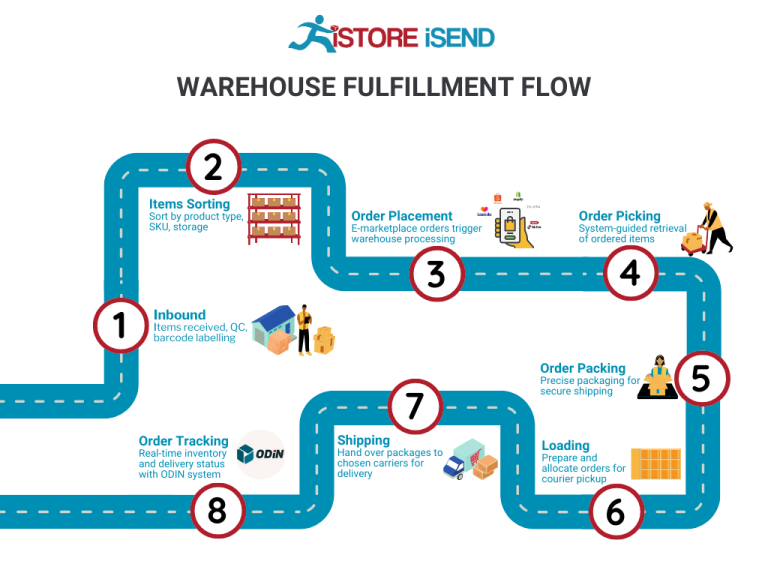
Key Term: Packing Slip – A document included in the package that lists the items contained within. This serves as a reference for both the customer and the fulfillment team, helping to confirm that the correct items have been packed and shipped.
5. Shipping & Delivery
The final step in the order fulfillment process is shipping and delivery. This entails handing off the packaged orders to shipping carriers, who transport them to the customers’ addresses. Businesses can choose from various shipping options based on speed, cost, and customer preferences.
Why It’s Important: Timely and reliable shipping is a key component of customer satisfaction. Meeting or exceeding delivery expectations can foster customer loyalty and drive repeat business. Additionally, a well-structured shipping strategy can help manage costs and optimize delivery times.
Key Term: Last-Mile Delivery – The final leg of the shipping process, where the package is delivered from a local distribution center to the customer’s door. Efficient last-mile delivery is critical for enhancing the customer experience and can be a significant factor in overall shipping costs.
By understanding and optimizing each step of the order fulfillment process, e-commerce businesses can enhance their operational efficiency, meet customer expectations, and ultimately drive growth.
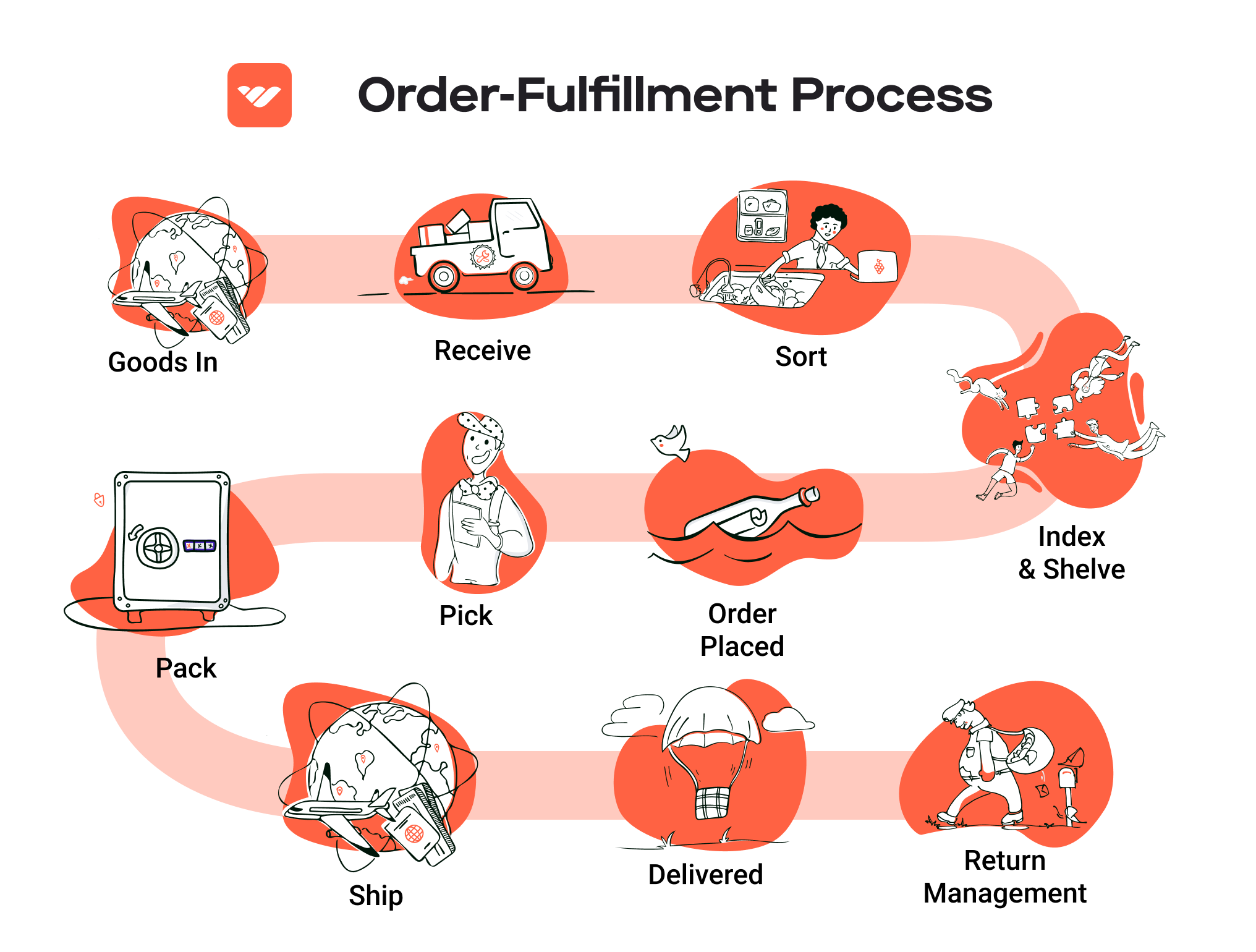
Comparing Fulfillment Models: In-House vs. 3PL vs. Dropshipping
Fulfillment Model Comparison Table
| Model | Who Handles Inventory | Best For (Business Stage) | Key Advantage | Key Disadvantage |
|---|---|---|---|---|
| In-House Fulfillment | The e-commerce business | Startups and established brands | Full control over inventory and operations | High overhead costs and scalability challenges |
| Third-Party Logistics (3PL) | 3PL provider | Growing and scaling businesses | Cost-effective, scalable, and expertise in logistics | Less control over the fulfillment process |
| Dropshipping | Supplier | New businesses and niche markets | Low startup costs and no inventory risk | Lower profit margins and potential supplier issues |
In-House Fulfillment
In-house fulfillment refers to the process where the e-commerce business manages all aspects of storage, inventory, and order fulfillment internally. This model is often preferred by startups and established brands that want to maintain complete control over their inventory and customer experience. By managing fulfillment in-house, businesses can tailor their operations to align closely with their brand values and customer expectations, offering personalized service and faster response times. However, this model comes with significant overhead costs, including warehousing, labor, and technology investments. As businesses grow, scaling operations can become increasingly complex, leading to potential bottlenecks in order processing and fulfillment efficiency. Therefore, while in-house fulfillment provides a high level of control, it may not be sustainable for businesses aiming for rapid growth.
Third-Party Logistics (3PL)
Third-party logistics (3PL) providers offer a comprehensive range of services, including warehousing, inventory management, order processing, and shipping. This model is best suited for growing and scaling businesses that require flexibility and expertise in logistics without the burden of managing these operations themselves. Partnering with a 3PL allows businesses to leverage the provider’s established infrastructure, technology, and carrier relationships, often resulting in reduced shipping costs and improved delivery times. Furthermore, 3PLs can help businesses quickly adapt to market changes and seasonal fluctuations in demand. However, outsourcing fulfillment means relinquishing some control over the process, which can lead to challenges in maintaining brand consistency and customer service quality. Businesses must carefully select a 3PL partner to ensure alignment with their operational needs and customer expectations.
Dropshipping
Dropshipping is a fulfillment model where the e-commerce business sells products without holding any inventory. Instead, when a customer places an order, the business purchases the item from a third-party supplier, who then ships it directly to the customer. This model is particularly appealing for new businesses and those operating in niche markets due to its low startup costs and minimal financial risk. Since there is no need to invest in inventory upfront, entrepreneurs can experiment with various products and market strategies without significant capital exposure. However, dropshipping comes with its own set of challenges. Profit margins are typically lower due to reliance on suppliers, and businesses can face issues related to product quality, shipping times, and stock availability. Additionally, as the business scales, managing relationships with multiple suppliers can become complex, potentially leading to inconsistencies in customer experience.
Conclusion
Choosing the right fulfillment model is crucial for e-commerce businesses looking to scale effectively. Each model—In-House, 3PL, and Dropshipping—offers unique advantages and disadvantages that must be carefully evaluated in the context of the business’s current stage, growth ambitions, and operational capabilities. In-house fulfillment provides control but can be costly and difficult to scale. In contrast, 3PL solutions offer flexibility and expertise, making them ideal for growing businesses, while dropshipping presents a low-risk entry point for new entrepreneurs but may lead to lower profit margins and quality control issues. By understanding these dynamics, e-commerce business owners can make informed decisions that align with their strategic goals and customer expectations.
A Deep Dive into Amazon FBA: Pros, Cons, and Who It’s For
Understanding Fulfillment by Amazon (FBA)
Fulfillment by Amazon (FBA) is a service provided by Amazon that allows sellers to store their products in Amazon’s fulfillment centers. Amazon then takes care of storage, packaging, and shipping, allowing sellers to leverage Amazon’s vast logistics network. When a customer orders a product, Amazon handles the entire fulfillment process, including customer service and returns, which provides sellers with an opportunity to scale their e-commerce business efficiently.
How FBA Works
-
Setting Up: Sellers create an Amazon Seller account and list their products on Amazon. They then choose to enroll in the FBA program.
-
Shipping Inventory: Sellers send their products to Amazon’s fulfillment centers. They can ship products in bulk and Amazon will handle the sorting and storage.
-
Order Processing: When a customer places an order, Amazon picks, packs, and ships the product on behalf of the seller. This process typically ensures fast delivery times, often within two days for Prime members.
-
Customer Service: Amazon manages customer service inquiries and returns, which means sellers do not need to handle these aspects directly.
-
Payment: After the product is sold, Amazon disburses payments to the seller, typically every two weeks, minus any fees associated with the FBA service.
Pros of Fulfillment by Amazon
-
Prime Eligibility: Products fulfilled by Amazon are automatically eligible for Amazon Prime, which can significantly increase visibility and sales. Prime members are more likely to purchase products that offer free two-day shipping.
-
Customer Trust: Amazon is a trusted brand, and using FBA can enhance the credibility of a seller’s products. Customers often prefer to buy from sellers who utilize FBA due to the reliable shipping and customer service associated with Amazon.
-
Multi-Channel Fulfillment: FBA allows sellers to fulfill orders from other sales channels (such as their own website or eBay) using Amazon’s logistics network. This means sellers can manage inventory in one place while offering a seamless experience across different platforms.
-
Scalability: FBA enables sellers to scale their operations without having to invest in their own warehousing and logistics. This is particularly beneficial for small businesses looking to grow quickly.
-
Automated Returns Management: Amazon handles returns on behalf of sellers, making the process easier and more efficient. This can enhance customer satisfaction as returns are processed swiftly.
Cons of Fulfillment by Amazon
-
High Fees: FBA comes with various fees, including storage fees for holding inventory and fulfillment fees for picking, packing, and shipping. These costs can eat into profit margins, especially for low-cost items.
-
Strict Inventory Rules: Amazon has stringent rules regarding inventory management. Sellers must adhere to guidelines on how much inventory they can send and how it must be labeled. Non-compliance can lead to additional fees or even account suspension.
-
Commingling Risks: When multiple sellers use FBA for the same product, Amazon may commingle inventory. This means that a seller could end up shipping products that are not theirs, which can lead to quality control issues and customer dissatisfaction.
-
Limited Control: By using FBA, sellers relinquish some control over the fulfillment process. Any issues that arise, such as shipping delays or inventory discrepancies, are handled by Amazon, which can be frustrating for sellers who prefer to manage their logistics personally.
-
Inventory Storage Limits: Amazon imposes limits on the amount of inventory a seller can store in its fulfillment centers, especially during peak seasons. This can be a constraint for sellers with high sales volumes.
Who is FBA Best For?
Fulfillment by Amazon is particularly well-suited for:
-
Small to Medium-Sized Sellers: Those who lack the infrastructure or resources to manage their own warehousing and logistics can benefit significantly from FBA.
-
E-commerce Entrepreneurs: Sellers looking to scale quickly without upfront investments in logistics can leverage Amazon’s established network.
-
Brands with High Sales Volume: Businesses that can sell in large quantities and maintain a steady flow of inventory may find that the fees associated with FBA become manageable and worthwhile.
-
Sellers Targeting Prime Customers: If a seller’s target audience is Amazon Prime members, FBA can enhance visibility and sales potential significantly.
-
Multi-Channel Retailers: Those selling across multiple platforms can streamline their operations by using FBA for order fulfillment, simplifying logistics management.
In conclusion, while FBA offers numerous advantages such as access to Amazon’s logistics, enhanced customer trust, and simplified returns management, it is essential for sellers to carefully weigh the associated costs and limitations. Understanding the unique needs of your business will help determine whether FBA is the right fulfillment solution as you scale your e-commerce operations.
Core Services Offered by Fulfillment Centers
Inventory Management & Warehousing
Inventory management and warehousing form the backbone of an effective e-commerce fulfillment strategy. This service involves the systematic tracking and storage of products before they are sold. Fulfillment centers employ advanced inventory management systems (IMS) to monitor stock levels, track product movements, and forecast demand.
Benefits:
-
Optimized Stock Levels: By utilizing IMS, businesses can maintain the right amount of inventory, minimizing the risk of overstocking or stockouts. This balance is crucial for maintaining cash flow and ensuring that customer demand is met without delay.
-
Efficient Space Utilization: Fulfillment centers are designed to store products in a manner that maximizes space and accessibility. This organized storage system allows for quick retrieval of items, which speeds up the fulfillment process.
-
Real-Time Visibility: E-commerce businesses gain access to real-time data regarding inventory levels, enabling them to make informed decisions regarding reordering and restocking. This visibility can also enhance customer satisfaction by ensuring that products are available when needed.
-
Scalability: As a business grows, the complexity of managing inventory increases. Fulfillment centers provide scalable solutions that can adapt to changing needs, allowing businesses to focus on growth without the burden of logistics.
Pick and Pack Services
The pick and pack service is a critical component of order fulfillment. It involves selecting the correct items from inventory (picking) and packaging them securely for shipment (packing). Fulfillment centers utilize streamlined processes to ensure that orders are processed quickly and accurately.
Benefits:
-
Speed and Efficiency: By leveraging technology and experienced staff, fulfillment centers can pick and pack orders at a much faster rate than most businesses can manage in-house. This speed is essential for meeting customer expectations for fast delivery.
-
Accuracy: Fulfillment centers implement quality control measures throughout the picking and packing process, reducing the likelihood of errors. Accurate order fulfillment fosters customer trust and encourages repeat business.
-
Cost-Effective: Outsourcing pick and pack services can reduce operational costs associated with staffing and training. Fulfillment centers often have established relationships with shipping carriers, allowing them to pass on discounted rates to e-commerce businesses.
-
Custom Packaging Options: Many fulfillment centers offer customizable packing solutions, including branded packaging and gift wrapping. This capability enhances the customer experience and helps build brand loyalty.
Kitting and Assembly
Kitting and assembly services involve grouping multiple products into a single package or assembling items together before they are shipped. This service is particularly beneficial for businesses that offer bundled products or require assembly prior to sale.
Benefits:
-
Streamlined Operations: By outsourcing kitting and assembly, businesses can simplify their logistics. Fulfillment centers handle the time-consuming process of assembling products, allowing e-commerce businesses to focus on marketing and sales.
-
Enhanced Product Offerings: Kitting allows businesses to create unique product bundles that can attract customers and increase average order value. This flexibility in product offerings can be a significant competitive advantage.
-
Reduced Lead Times: Fulfillment centers are equipped to handle kitting and assembly efficiently, which can significantly reduce lead times for fulfilling orders. This speed is essential in meeting customer demands, especially during peak shopping seasons.
-
Inventory Management Efficiency: By combining items into kits, fulfillment centers can help businesses manage inventory more effectively. Instead of tracking multiple individual SKUs, businesses can track kits as a single unit, simplifying inventory management.
Returns Management (Reverse Logistics)
Returns management, or reverse logistics, is the process of handling returned products. This service encompasses everything from receiving returned items, inspecting them, processing refunds or exchanges, and reintegrating them into inventory.
Benefits:
-
Customer Satisfaction: A streamlined returns process enhances the customer experience. When returns are handled efficiently, customers are more likely to feel valued and satisfied, which can lead to repeat business and positive reviews.
-
Operational Efficiency: Fulfillment centers have established processes for managing returns, allowing e-commerce businesses to minimize the operational strain associated with handling returns in-house. This efficiency can free up resources for other critical business functions.
-
Inventory Reintegration: Fulfillment centers can quickly assess and process returned items, ensuring that they are reintegrated into inventory in a timely manner. This capability helps maintain accurate inventory levels and reduces losses associated with unsold returned goods.
-
Data Insights: Many fulfillment centers provide analytics on return reasons and trends. This data can be invaluable for e-commerce businesses, helping them identify product issues and improve overall customer satisfaction.
By leveraging these core services offered by fulfillment centers, e-commerce businesses can enhance their operational efficiency, improve customer satisfaction, and ultimately scale their operations more effectively.
How to Choose a Fulfillment Partner: A 6-Point Checklist
Location & Warehouse Network
Importance:
The location of your fulfillment partner’s warehouses significantly impacts shipping times and costs. Strategically located warehouses can facilitate quicker deliveries, which is increasingly important as consumers expect fast shipping.
Questions to Ask:
– Where are your fulfillment centers located? How does this align with our customer base?
– Can you provide regional warehousing options to minimize shipping zones?
– What are your average shipping times to key markets?
Technology & Integrations
Importance:
A robust technology platform can streamline order management, inventory tracking, and reporting. Additionally, seamless integrations with your existing e-commerce platforms (like Shopify, WooCommerce, etc.) are crucial for maintaining operational efficiency.
Questions to Ask:
– What type of order management system do you use? Can we access real-time tracking?
– Do you support integrations with our e-commerce platform and other tools we use?
– How does your system handle inventory updates and order status changes?
Specializations (e.g., Cold Storage, Oversized Items)
Importance:
Different products require different handling and storage solutions. If you sell specialty items, such as perishables or oversized products, ensuring your fulfillment partner has the necessary capabilities is crucial.
Questions to Ask:
– Do you have specialized storage options for temperature-sensitive products?
– Can you handle oversized items, and what are the limitations regarding size and weight?
– What additional services do you offer that cater to our specific product needs?
Scalability & Capacity
Importance:
As your business grows, your fulfillment needs will change. Partnering with a fulfillment provider that can scale alongside your business is vital to avoid disruptions in service.
Questions to Ask:
– How do you handle peak seasons or unexpected spikes in order volume?
– What is your current capacity, and can you scale up during busy periods?
– Are there any limitations on the volume of orders you can fulfill for us?
Pricing and Contracts
Importance:
Understanding the pricing structure and contract terms is essential for managing your budget and ensuring there are no hidden fees. A transparent pricing model allows you to forecast fulfillment costs accurately.
Questions to Ask:
– Can you provide a detailed breakdown of your pricing structure, including any hidden fees?
– What are the terms of your contracts? Is there flexibility for scaling up or down?
– Do you offer volume discounts or incentives for long-term commitments?
Customer Support & Reviews
Importance:
Reliable customer support can make a significant difference in your fulfillment experience. A partner that provides excellent customer service can help resolve issues quickly and keep your operations running smoothly.
Questions to Ask:
– What level of customer support do you offer? Is it available 24/7?
– Can you provide references or case studies from current clients?
– How do you handle issues or complaints, and what is the process for escalation?
Conclusion
Choosing the right fulfillment partner is a critical decision that can impact your e-commerce business’s efficiency, customer satisfaction, and overall growth. By using this checklist, you can systematically evaluate potential partners based on essential criteria that align with your business goals. Make sure to conduct thorough research and ask the right questions to ensure that you select a fulfillment provider that not only meets your current needs but can also support your future growth.
Understanding Fulfillment Pricing: A Breakdown of Common Fees
Initial Setup Fees
When partnering with a fulfillment provider, the initial setup fees are often the first costs you encounter. These fees cover the onboarding process, which includes integrating your e-commerce platform with the fulfillment provider’s system, configuring inventory management settings, and establishing operational workflows. Typically, these fees can range from a few hundred to several thousand dollars, depending on the complexity of your needs and the provider’s capabilities.
The calculation of initial setup fees usually considers factors such as:
– Integration Complexity: How many systems need to be connected (e.g., e-commerce platform, inventory management software, etc.).
– Volume of Products: The number of SKUs being added to the system can increase setup time.
– Custom Requirements: If your business requires tailored solutions, expect higher fees.
Receiving Fees
Receiving fees are charged when your inventory arrives at the fulfillment center. These fees cover the labor and resources needed to unload, inspect, and store your products. They can vary based on the size and quantity of your shipments.
The calculation of receiving fees is typically based on:
– Per Pallet or Box: Fees are often charged per pallet or box received, with larger or heavier items potentially incurring higher fees.
– Inspection Requirements: If products require additional inspection or quality checks, this may lead to increased fees.
Storage Fees (per pallet/bin)
Storage fees are charged for the physical space your inventory occupies within the fulfillment center. These fees are generally calculated on a per-pallet or per-bin basis, and they can vary based on the duration your inventory remains in storage.
Key factors influencing storage fees include:
– Duration of Storage: Many providers charge monthly fees, so the longer your inventory is stored, the higher your costs.
– Size of Inventory: Larger items may take up more space, leading to higher storage fees.
– Seasonal Variability: Some fulfillment centers may offer discounted rates during off-peak seasons or for long-term storage agreements.
Pick & Pack Fees (per item/order)
Pick and pack fees are charged for the labor involved in picking items from the warehouse and packing them for shipment. These fees can vary based on the number of items in each order and the complexity of the packing process.
The calculation of pick & pack fees typically considers:
– Per Item Fee: Many fulfillment providers charge a fee for each item picked and packed. This fee can vary based on the item’s size and weight.
– Order Complexity: Orders requiring special handling, such as kitting or custom packaging, may incur higher fees.
– Volume Discounts: Some providers offer lower fees as your order volume increases, making it beneficial for scaling businesses.
Shipping Fees
Shipping fees are one of the most significant costs in the fulfillment process, covering the transportation of packages from the fulfillment center to the customer. These fees can vary widely based on several factors, including shipping method, package weight, and destination.
Shipping fees are typically calculated based on:
– Shipping Carrier Rates: Fulfillment providers often negotiate bulk shipping rates with carriers, which can be passed on to you as a customer. Rates vary by carrier (e.g., USPS, FedEx, UPS).
– Package Weight and Dimensions: Heavier and larger packages typically incur higher shipping costs.
– Delivery Speed: Expedited shipping options will generally cost more than standard delivery.
Tips for Getting an Accurate Quote
When seeking an accurate quote from fulfillment providers, consider the following tips:
-
Be Transparent: Provide detailed information about your product dimensions, weights, and expected order volumes to help the provider assess your needs accurately.
-
Ask About Hidden Fees: Inquire about any additional fees that may not be included in the initial quote, such as returns processing or seasonal surcharges.
-
Evaluate Multiple Providers: Compare quotes from various fulfillment centers to understand the market rate and find the best fit for your business.
-
Request Custom Pricing: If your business model has unique requirements, ask providers for custom pricing options that reflect your specific needs.
-
Understand Contract Terms: Review the terms of service and pricing structures carefully to ensure you’re aware of any commitments and potential increases in fees over time.
By comprehensively understanding these common fulfillment pricing models and following these tips, you can make informed decisions that align with your business goals and budget.
Frequently Asked Questions (FAQs) about Fulfillment
1. What is eCommerce fulfillment?
eCommerce fulfillment refers to the entire process of receiving, processing, and delivering orders to customers after they make a purchase online. This includes inventory management, order processing, picking and packing items, and shipping them to the customer’s specified address. Effective fulfillment is crucial for meeting customer expectations and maintaining satisfaction.
2. What is the difference between a warehouse and a fulfillment center?
A warehouse primarily serves as a storage facility for goods, focusing on inventory management and long-term storage. In contrast, a fulfillment center not only stores inventory but also handles the entire fulfillment process, including order processing, picking, packing, and shipping. Fulfillment centers are designed to expedite the delivery process, often incorporating advanced technologies to enhance efficiency.
3. What is a 3PL?
A 3PL, or third-party logistics provider, is a company that offers logistics services to businesses, including warehousing, fulfillment, and shipping. By outsourcing these functions to a 3PL, eCommerce businesses can leverage their expertise, technology, and infrastructure, allowing them to focus on other strategic areas of their operation while ensuring efficient order fulfillment.
4. How much do fulfillment services cost?
Fulfillment service costs vary based on several factors, including the size and weight of products, the volume of orders, storage fees, and additional services like kitting or returns management. Typically, fulfillment providers charge a combination of per-order fees, storage fees based on the space your inventory occupies, and shipping costs. It’s essential to compare providers and understand their pricing structures to find the best fit for your business.
5. How does fulfillment impact customer satisfaction?
Fulfillment plays a crucial role in customer satisfaction as it directly affects delivery speed, accuracy, and cost. Customers today expect fast and reliable shipping, often within two days. Efficient fulfillment processes ensure that orders are accurately picked and packed, reducing errors and damage, while also providing affordable shipping options. A strong fulfillment strategy can lead to repeat purchases and positive brand perception.
6. What are the key components of the fulfillment process?
The key components of the fulfillment process include:
– Inventory Management: Tracking stock levels and managing reorders.
– Order Processing: Receiving and confirming customer orders.
– Picking: Selecting items from inventory based on orders.
– Packing: Preparing items for shipment, including labeling.
– Shipping: Transporting orders to the customer via various carriers.
– Returns Management: Handling returned items and reintegrating them into inventory.
7. How can I choose the right fulfillment provider?
Choosing the right fulfillment provider involves considering factors such as their experience, technology, shipping options, and customer service. Evaluate their ability to scale with your business, their shipping speed, and the flexibility of their services. Additionally, request references and case studies to understand their track record with other eCommerce businesses.
8. What technology is used in fulfillment?
Fulfillment technology includes warehouse management systems (WMS), inventory management software (IMS), and order management systems (OMS). These tools help streamline operations by providing real-time inventory tracking, automating order processing, and enhancing communication between different parts of the supply chain. Advanced fulfillment providers may also use robotics and AI to improve efficiency and accuracy.
9. How can I manage returns effectively?
Effective returns management involves having a clear and efficient process for handling returned items. This includes providing customers with easy-to-follow return instructions, ensuring prompt processing of returns, and reintegrating returned products into your inventory system. Partnering with a fulfillment provider that offers robust returns management services can simplify this process and enhance customer satisfaction.
10. What are the benefits of outsourcing fulfillment?
Outsourcing fulfillment allows eCommerce businesses to leverage the expertise and resources of a specialized provider. Key benefits include:
– Scalability: Easily adjust to changes in order volume without the need for significant infrastructure investment.
– Cost Savings: Benefit from bulk shipping rates and reduced overhead costs associated with warehousing and staffing.
– Improved Efficiency: Utilize advanced technology and processes to streamline order fulfillment, leading to faster shipping times.
– Focus on Core Business: Free up time and resources to concentrate on marketing, product development, and customer engagement.
Conclusion: Is Outsourcing Fulfillment the Right Move for Your Business?
Evaluating the Benefits of Outsourcing Fulfillment
Outsourcing fulfillment can be a transformative decision for e-commerce businesses seeking to scale operations effectively. One of the primary advantages of partnering with a fulfillment service is the significant time savings it offers. By delegating the complexities of order processing, inventory management, and shipping logistics to an expert provider, you can refocus your energy on core business activities such as marketing, product development, and customer engagement. This shift not only enhances operational efficiency but also allows your team to innovate and grow without being bogged down by logistics.
Scalability is another critical benefit. As your business experiences fluctuations in order volume, a fulfillment partner can seamlessly adjust to meet demand. This flexibility is vital for capitalizing on seasonal trends or unexpected surges in sales. A reputable fulfillment service typically has the infrastructure and technology in place to manage increased volumes without compromising service quality, thereby ensuring customer satisfaction and loyalty.
Moreover, leveraging the expertise of a fulfillment provider can enhance your logistical capabilities. These partners possess specialized knowledge of shipping regulations, inventory management systems, and best practices in logistics. This expertise not only improves operational efficiency but can also lead to cost savings through optimized shipping routes and bulk discounts from carriers.
However, the choice of a fulfillment partner is paramount for realizing these benefits. It’s crucial to conduct thorough research and select a provider that aligns with your business goals, operational needs, and customer expectations.
Strategic Call-to-Action
To determine if outsourcing fulfillment is the right next step for your business, consider conducting an audit of your current shipping processes. Analyze your fulfillment efficiency, customer satisfaction, and operational challenges. This assessment can provide valuable insights into whether a fulfillment partner could enhance your business growth and operational success. Take the time to explore your options and make an informed decision that aligns with your strategic vision.
Important Disclaimer
⚠️ Important Disclaimer
The information in this guide is for educational purposes. Fulfillment services, pricing, and platform features change frequently. Always conduct your own due diligence and consult with providers directly before making business decisions.
